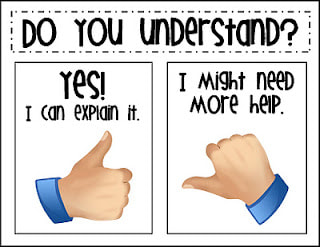|
Atkinson (1987: 241-247) offers a list of nine reasons for using L1 in the EFL classroom:
1. Eliciting Language “How do you say ‘X’ in English?” 2. Checking comprehension “How do you say ‘I’ve been waiting for ten minutes in Spanish?” 3. Giving complex instructions to basic levels 4. Co-operating in groups Learners compare and correct answers to exercises or tasks in the L1. 5. Explaining classroom methodology at basic levels 6. Using translation to highlight a recently taught language item 7. Checking for sense If students write or say something in the L2 that does not make sense, have them try to translate it into the L1 to realize their error. 8. Testing Translation items can be useful in testing mastery of forms and meanings. 9. Developing circumlocution strategies. When students do not know how to say something in the L2, have them think if (sic) different ways to say the same thing in the L1, which may be easier to translate.
0 Comments
One of the difficulties English teachers always have is getting students to understand the instructions to develop one activity or task. This is more frequent when the teachers has to speak only in English in order to provide students with more input. One easy step teachers can take to overcome this difficulty is to use questions to verify understanding of instructions. The following is a sample interaction teachers could follow to be sure instructions were clearly understood:
T: (While delivering instructions) In this activity you need to work in groups, discuss if you agree or not with the following statement: "It's a bad idea for university students to have part time jobs." After five minutes, you will choose someone from the group to present your conclusions to the class. Carlos, What is the statement you'l talk about? Carlos: We need to talk about university students and part time jobs...Is it good? T: Fine. Maria, how much time do you have for this activity? Maria: Ten minutes. T: Not really, I said you have five minutes. Maria: Ok, five minutes. T: Jose, what will you do after the discussion? Jose: We will select someone to present the conclusion. T. Yes, that's right...You can start now. The following are some tips to ask more effective questions when verifying understanding. -Ask these questions after instructions have been given to students. -Try to use Wh-questions. -Call on individual students. -Provide students with feedback after their responses. |
AuthorFind tips, materials, and ideas for English teachers. Archives
March 2020
Categories |
Mapa del sitio
© COPYRIGHT 2024. ALL RIGHTS RESERVED.



 RSS Feed
RSS Feed